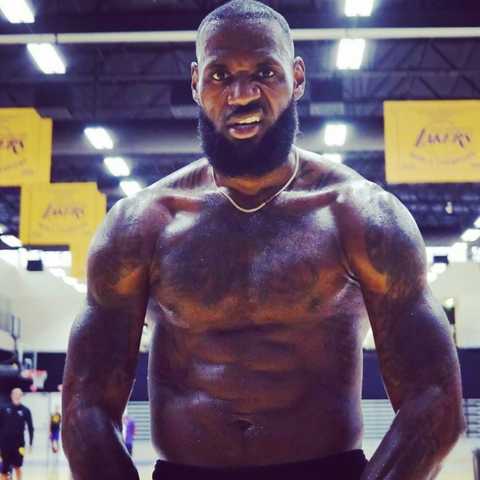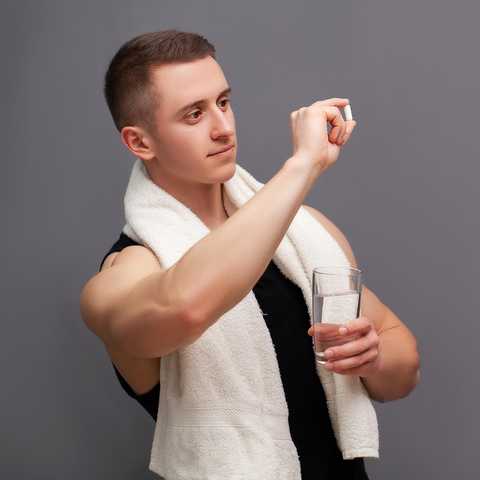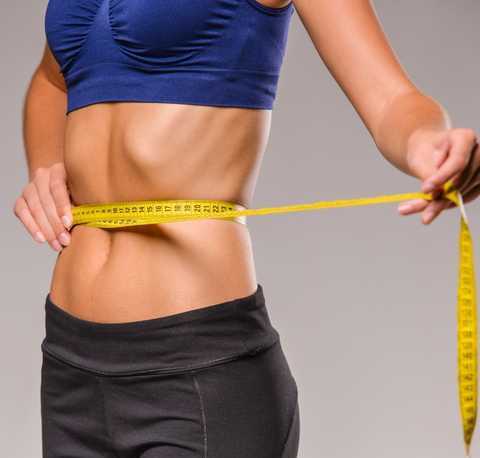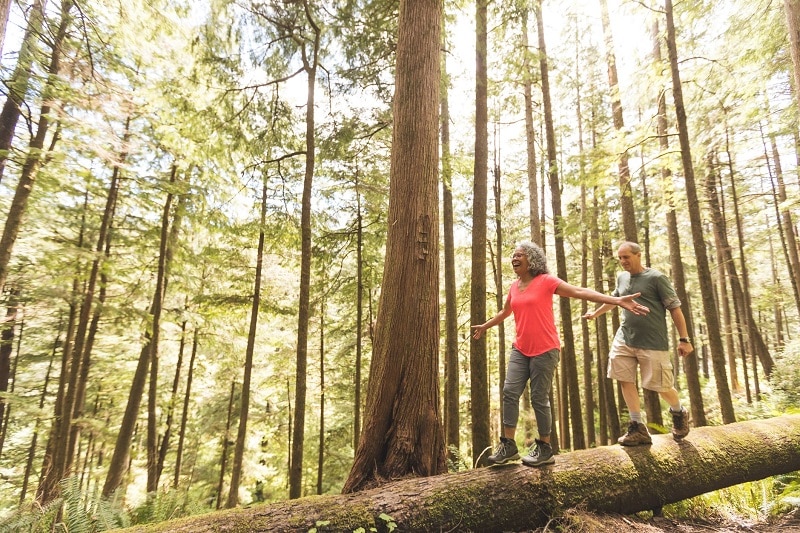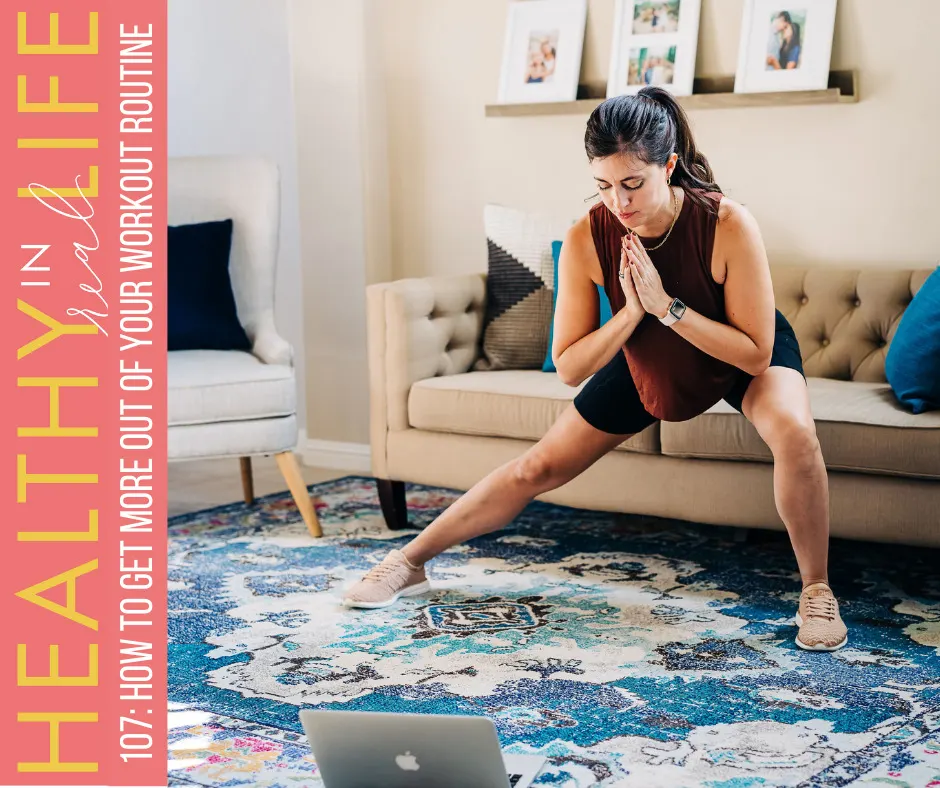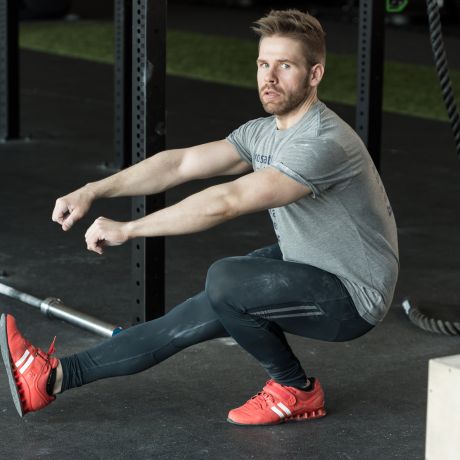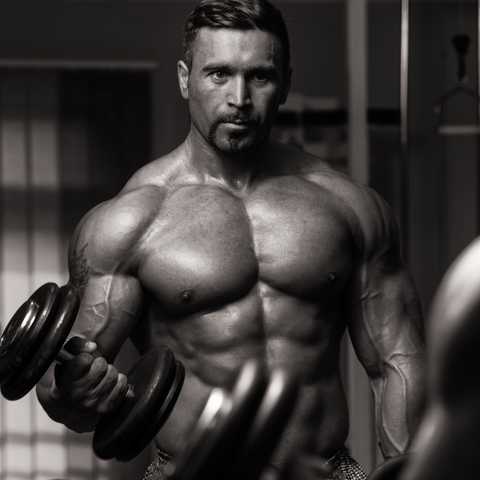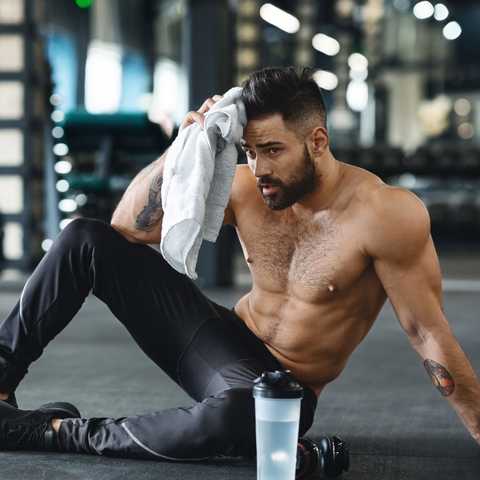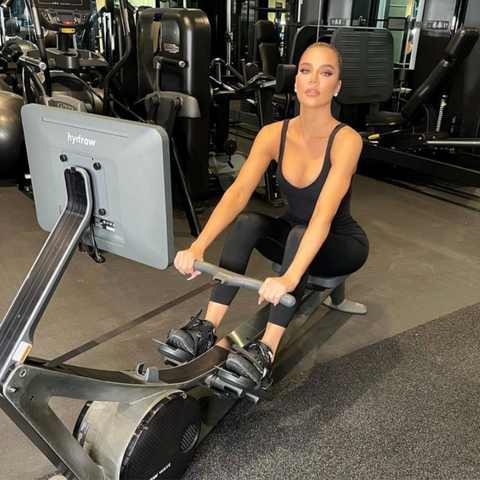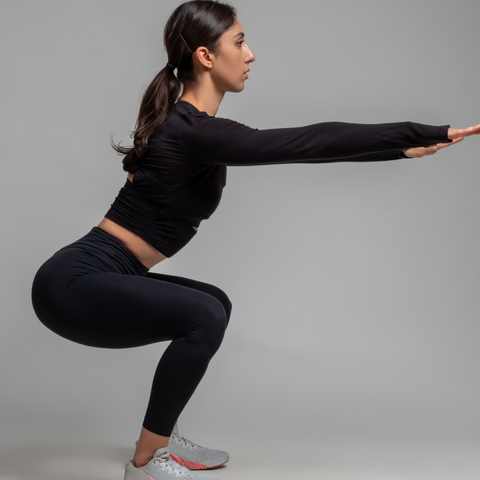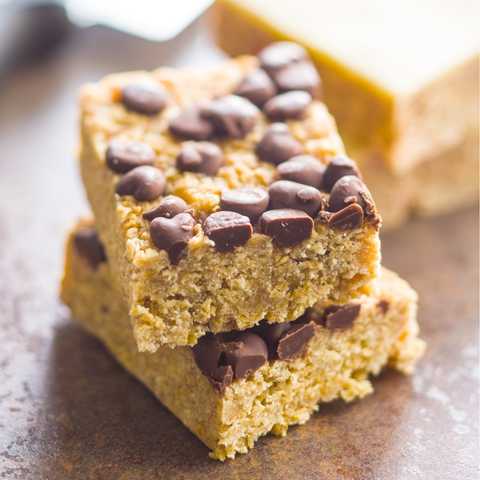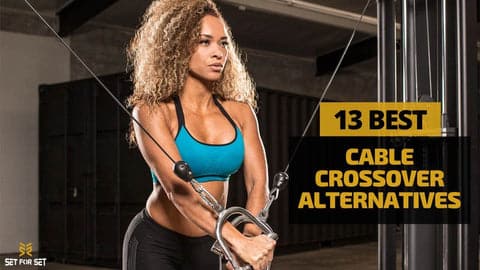If you have seen someone perform a pistol squat in the gym, you’ve seen some looks of amazement from the people watching.
It’s an exercise that is certainly a head-turner, but be careful before you jump into attempting one of these because it looks cool. Pistol squats are a fantastic unilateral exercise, but they can be tricky if you don’t have the necessary mobility in your lower body. Skill exercises require a different approach and must use the correct progressions to ensure you can do the move safely.
Lucky for you, we will go over how to do the pistol squat today. Here is what the article will cover:
- What is a pistol squat?
- What to know before you start pistol squatting
- How to perform a pistol squat and common mistakes
- How to do a pistol squat for beginners
- Muscles worked in pistol squats
- Pistol squat benefits and drawbacks
- Pistol squat variations, modifications, alternatives, and progressions
- Pistol squat sample workout
- FAQ
What is a Pistol Squat?
The pistol squat is an advanced single-leg squat using only your body weight. Using your power and control, you’ll lift one leg and keep it in the air while you squat down on the other leg until your hamstring covers your calf and the other leg is straight out in front of you. This requires extreme full-body control, and the exercise will highlight any imbalance in your hip, knee, and ankle joints.
Since it is so challenging and has some mobility requirements, it is often difficult for someone to jump right into doing full pistol squats. Many modifications and progressions of this exercise allow people to start at whatever level they need to and improve from there until they can perform a pistol squat.
Bodyweight skill exercises like the pistol squat will challenge a gym goer to use progressive overload with their practice and not simply add weight each week. This can feel defeating, but nothing sweeter than the first time you execute a proper pistol squat, and everyone in the gym looks at you in amazement.
What to Know Before You Start Pistol Squatting
Okay, so you just saw someone bust out a few pistol squats in the gym, and you feel like you want to try it. That’s awesome! But there are a few things you need to think about before trying the regular pistol squat.
The first question you need to ask yourself is, have you been doing any single-leg training? This can refer to step-ups, lunges, split squats, and many other exercises. If the answer is no, chances are you are a newer lifter, and you should start with some of those foundational exercises before attempting the pistol squat. You need to develop strength using unilateral exercises first because even though it’s a bodyweight exercise, the pistol squat is very advanced.
The second thing you should consider is asking yourself how your body feels. What we mean by that is, do you have healthy and mobile joints? The pistol squat will highlight any imbalances, tightness, or weakness in the hip, knee, and ankle joints. If your ankle is too tight, your heel is going to come off the floor and won’t be able to support your body. If you have achy knees, this exercise is a lot of stress on that joint since it’s supporting your entire body weight. If you have tight hips that don’t move very well, using your glutes to stand up from the bottom of the squat will be challenging.
We don’t want to scare you away from the pistol squat, but you should know that this move isn’t for everyone. If you have pain or past injuries that affect these joints, you probably have better options. Having said that, the cool thing about this exercise is that if you want to learn and conquer it, there are starting points for everyone. You can practice the pistol squat with modified versions, and as you can stronger, you can move to the following progressions until your pistol squatting.
How to do a pistol squat for beginners
- First, you need to ensure you have the ankle and hip mobility required to perform this exercise. To make it to the bottom portion of the rep, where your hamstring is against your calf, your ankle needs to support you. Perform a half kneeling knee-to-wall test or check to see if you can hold a deep resting bodyweight squat with hamstrings covering your calves and knees pushed forward and out with a flat back.
- Next up are the hips. From an upright standing position, you need to make sure you can lift one knee into your chest so your thigh makes contact with your ribcage. If you can do these, you are well on nailing your first pistol squat.
- We will touch more on the progressions shortly, but as a starting point, you should be able to perform 15 bodyweight squats before moving on to the next step. Make sure to stretch your ankle/Achilles and perform a pigeon or frog stretch for your hips. It can also be beneficial to warm up properly before doing your pistol progressions.
- After that comes the easy but difficult part, practice, practice, PRACTICE!
How to Perform a Proper Pistol Squat
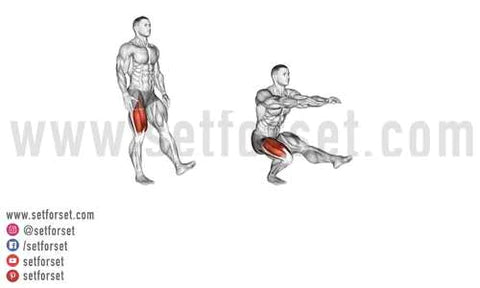
We will go more in-depth on other modifications and progressions, but for this portion, we will highlight the end goal, the bodyweight pistol squat. It is an advanced exercise with several vital details, so follow these guidelines to conquer a full pistol squat.
- Stand up straight with your feet hip-width apart and your toes pointed forward.
- Pick up your right leg and extend it straight out, just a few inches off the floor. Your foot should be flexed, and your toes pointed up. Make sure to grip the floor with your left foot and slightly force your toes and knee out to engage your glutes. Put both arms straight in front of you at shoulder level. Brace your core and look straight ahead.
- Brace your core and back, bend your left knee as you hinge, and send your hips down and back. Slowly lower yourself down to the ground, just like a regular squat. Your knee should be past your toes, and you should be sitting on your calf at the bottom. The right leg and arms should stay extended and lifted the entire time.
- Pause for a moment at the bottom of the movement, then push through your left foot to slowly reverse the movement and begin to stand back up. Make sure to keep your arms straight out in front of you and keep your torso upright the entire time.
- Repeat on the opposite leg.
6 Common pistol squat Mistakes to avoid
Pistol squat practice can alleviate some of these common mistakes we see people often committing.
1. Biting off more than you can chew
The most common mistake is when people try to jump right into the pistol squat if they aren’t ready. As we discussed earlier, you must consider a few things before trying this exercise. If you aren’t doing single-leg training, start with some foundational exercises to build strength. Or, you may need to work on ankle mobility and hip mobility so your body will grant you the range of motion required to do the exercise. Once you’ve done those, you may have more success starting with an assisted pistol squat before jumping off the cliff and diving into the advanced version.
2. Heel coming off the ground
At the bottom of the pistol squat, your heel will tend to come off the ground if you have poor ankle mobility. You need adequate dorsiflexion so your body can sit back into your heels and achieve the bottom range of motion. This can be as simple as standing or seated calf raises to build strength and stretch the ankle. A proper warmup with ankle stretches will also help loosen the areas before trying this movement.
3. Rounding your back on the way up
It’s essential to keep an upright posture with your arms straight out in front of you so you can use your glutes to stand up from the bottom of the squat. If you find your back arching and falling forward during the ascent portion, you need to strengthen your core or glutes to make sure you can maintain an upright torso.
4. Twisting
When performing this exercise, you must ensure your knee, hip, and ankle stay in line with each other. Focus on a slow descent and keep these things in line, or your body will fall into its imbalances. If you feel your knee caving in during the squat, your hips will shoot out the other way, and you’ll find your body twisting through the movement.
5. Free falling
Sometimes beginners are so excited to achieve their first pistol squat rep that they fall to the bottom range of motion. Make sure to slow down, control the negative, and protect your joints during the eccentric portion of the movement.
6. Stopping short
If you find yourself only squatting halfway down, try assisted pistol squat variations first to build strength in the range of motion that needs to be built up first. Once you’ve done that, stick to the same rule of moving slowly the entire way down and controlling the movement to ensure you aren’t falling to the bottom.

Muscles Worked in Pistol Squats
Pistol squats require multiple muscle groups to work in unison in order to properly perform them. Below we cover the main muscles that are engaged when doing pistol squats.
- Glutes: Your gluteus maximus, medius, and minimus will be hard at work stabilizing the knee during the eccentric portion of this exercise and extending the hip as you stand up from the bottom of the squat. It’s important to maintain a fully controlled range of motion so that the muscles of your butt can perform their job correctly.
- Quadriceps: The pistol squat is predominantly a knee flexion and extension exercise. With the extreme range of motion, you get a deeper knee flexion than normal which builds strength in the muscles on the front of your thigh. It also means they have to work twice as hard since it’s a unilateral movement supporting all of your body weight to extend and lock the lockout.
- Core: As soon as you take one leg off the ground, you have reduced your support base, and your core muscles are firing to ensure you don’t fall to the floor. Your abs, hip flexors, obliques, and low back extensors are hard at work to maintain an upright torso and transfer power from your lower body to your upper body. They also will receive a strong anti-rotation stimulus as you work to keep your knee, hip, and ankle in line.
- Hamstrings: The muscle on the back of your thigh works to stabilize during the eccentric and assist with the lockout portion of hip extension. They also function to support the knee and hip throughout the movement.
- Ankle stabilizers: Again, as soon as you lift one leg off the floor, your ankle stabilizers will work extremely hard to ensure you don’t fall over. Also, with the extreme knee flexion this exercise provides, your ankle needs to be mobile enough and strong enough to sit down into that deep squat position.
5 Pistol Squat Benefits
Pistol squats are one of the harder leg bodyweight exercises to execute but they come with some amazing benefits. Below we cover some of the upsides of learning the pistol squat and incorporating it into your workout regimen.
1. Fix imbalances in the lower body
Every person has a dominant side, and things will never be perfectly symmetrical and balanced regarding strength and aesthetics. It’s still extremely important to perform unilateral exercises to balance this out as much as possible, or you will likely have injuries down the road. Chances are you likely lean and favor one side most of the time. Try to notice how you stand throughout the day even. The pistol squat helps strengthen all the stabilizer muscles, which will help improve your balance as well.
2. Improve stability and balance
It may not seem like it, but most of the movements you do in your everyday life and certainly in your sport are performed on one leg. Walking is our most common activity, and if there are imbalances in one side of your body, they will only be reinforced with every step you take every single day. Mobile hips, ankles, and strong stabilizer muscles will help build strength and balance, so your body can handle whatever movements you repeatedly ask it to perform.
3. Increase leg muscle and strength
Since you ask your body to handle your entire body weight on one leg, you will seriously increase the strength of the lower body muscles. With progressive overload, a stronger muscle will almost always be a bigger muscle. Keep in mind mobility is a form of strength as well, and if you can move better, you can handle more weight and get stronger, especially if you can progress to weighted pistol squats.
4. Scary but scalable
Don’t let the look of a pistol squat scare you away. Yes, it can appear intimidating, but the cool thing about bodyweight skill work like this exercise is that it’s straightforward to scale it to your starting level. Whether you need to address ankle mobility or increase strength at a specific range of motion, there is a progression for everyone.
5. They are fun
This isn’t the end all be all when deciding what exercise to do, but we would be lying if we didn’t say that pistol squats are just downright cool. There is a serious sense of accomplishment when you practice and practice and are finally able to nail that first rep in a crowded gym. It’s less popular than the bench press, but sometimes that’s why it’s much more impressive to see someone do it.
Pistol Squat Drawbacks
Now that went over the good aspects of pistol squats we also wanted to cover some of the drawbacks as well.
1. They will humble you
The pistol squat isn’t something you can’t just “out tough.” What we mean by that is sometimes it’s not a matter of will. It can be difficult if you don’t know why you can’t perform a pistol squat and have no idea where to begin. It can also be humbling if you are a reasonably strong lifter but are surprised when you can’t do this exercise. Follow the progressions and attack your weak points, and you’ll be well on your way to knocking these out if you have some patience and discipline.
2. Stress on joints
This movement can put double the stress on the knee joint, and even if you are in great shape, some people’s bodies will not like this movement. Especially if you have poor mobility in other areas, it may be too risky to try this movement. As always, there is no need to be married to a single exercise, and if this one is causing you pain, stick to other single-leg exercises.
3. It doesn’t happen overnight
Any skill exercise will take some time to perform the final pistol squat progression. It can be frustrating to feel like your progress is stalling or that you will never be able to do it. Keep it fun, and remember that this can be a playtime portion of your workout.
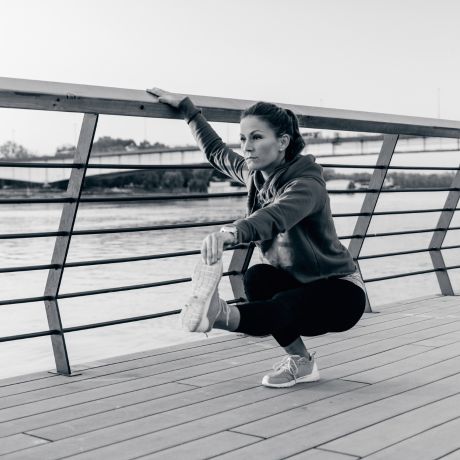
5 Pistol Squat Modifications
If you can’t do a pistol squat properly don’t fret as we’ve covered some simpler versions below that will help you make progress in some common weak areas many people have when attempting pistol squats.
1. TRX-assisted pistol squat
If you need some extra balance as you are learning the pistol squat, using the TRX straps or rings to have something to hold onto is a great option. The straps allow you to use them as much as you need to or as little as you need to as you get stronger.
- Grab your straps or rings and ensure they are at chest level so your arms can rise and fall naturally during the movement.
- Stand tall and lift your right leg in front of you while keeping it straight.
- Begin to bend at your left knee and sit back in the chair. Keep your upper body upright and keep tension on the rings but allow your arms to straighten as you squat.
- Once you have reached the bottom, push through your left foot and pull on the rings to help you stand back to the starting position. Repeat.
TRX Assisted Pistol Squat on Youtube
2. Pistol squat to chair with heel down
This variation is the next step in performing this movement without the assistance of the rings. The box allows you to sit to the necessary depth, and keeping your other leg down will provide extra stability until you are ready to lift it.
- Set up a box or chair behind you to sit down on. The box can be as high or low as you need. Make sure to start at the appropriate height for your current level.
- Standing upright with feet hip-width apart, lift your right leg and place it slightly in front of you while keeping it straight and touching your heel to the floor.
- Keeping the right leg straight, begin to bend the left leg and squat down until your body touches the box/chair.
- Press through your left foot while keeping the right leg straight and body upright, and return to the starting position.
3. Pistol squat to chair
It’s time to practice balancing on one leg at a time. The chair will still be there for you to achieve proper depth and provide some stability, but now one leg is doing all of the work.
- Set up a box or chair behind you to sit down on.
- Stand upright in front of the box with feet hip-width apart. Lift your right leg off the floor while keeping it straight and flexing your foot.
- Bend your left leg and squat down on the box while keeping your body upright. Keep your right leg from touching the ground, and ensure it stays straight.
- Once you’ve sat down on the box, drive through your left foot and return to standing. Repeat.
Pistol Squat to Chair on Youtube
4. Negative pistol squat
Once you remove the box, you will have much less stability at the bottom portion of the squat. If you aren’t quite able to stand up yet, this negative version allows you to strengthen the eccentric on one leg and use both legs to stand up from the bottom until you build more strength.
- Stand upright with feet hip-width apart and lift your right leg off the floor, keeping it straight. Stick your arms straight out in front of your shoulders.
- Maintain your upright posture, bend your left leg, and squat down as slowly as possible while keeping your right leg straight and off the floor.
- Once you reach your bottom range of motion, place your right leg back underneath you on the floor and stand up using both legs like a basic bodyweight squat. Repeat.
Negative Pistol Squat on Youtube
5. Pistol squat with counterweight reach
Congrats, you are almost able to knock out a bodyweight pistol squat! This counterweight reach will help balance the bottom portion of the rep.
- Stand upright with feet hip-width apart and holding a weight plate at chest level with both hands.
- Lift your right leg and keep it straight and off the floor. Begin to bend your left leg and squat down as low as possible.
- As you reach the bottom, extend your weight straight out in front of you so it helps balance you. Press through your left foot to stand and pull the weight back to chest level.
Pistol Squat with Counterweight Reach on Youtube
Pistol Squat Progressions
Once you’ve mastered the pistol squat there are a few ways you can turn up the intensity to give yourself more challenges. Try these two pistol squat progressions if you’re up for it.
1. Tempo pistol squat
Slowing down your tempo is an easy way to make the pistol squat more difficult without adding weight. This requires more body control and time under tension, which will provide a serious challenge. Think 3-5 seconds down and 3-5 seconds up.
- Stand tall with feet hip-width apart and lift your right leg off the floor.
- Keeping that leg straight and hovering, squat down into your left leg. Keep tension on the quad and move as slowly down as you can.
- Once you reach the bottom, resist the urge to stand up quickly. Stand up slowly with the same slow tempo. Repeat.
Tempo Pistol Squat on Youtube
2. Pause pistol squat
This is another way to manipulate your time under tension. Pausing will also help you build strength at your weakest points during the lift. Identify which part of the squat is the hardest and make that your pause point. It can be on the way down or on the way up.
- Stand tall with feet hip-width apart and lift your right leg off the floor.
- Keeping that leg straight and hovering, squat down into your left leg. Squat until you reach your sticking point, and then maintain tension and hold there for 3 seconds.
- Continue to the bottom of the rep and then stand up and repeat.
Pause Pistol Squat on Youtube
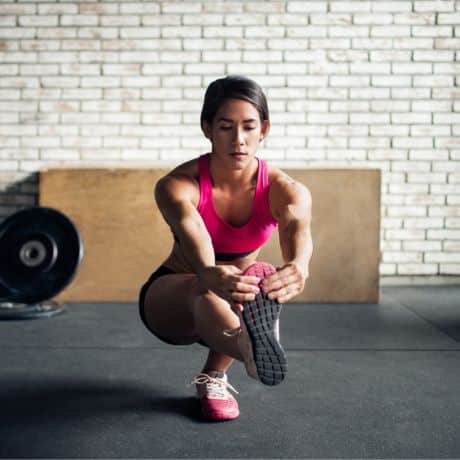
Pistol Squat Variations
1. Goblet pistol squat
When you finally have been pumping out a few bodyweight pistol squat reps, it’s time to add some resistance to the movement. This won’t be the same weight as your bilateral goblet squat, so start light and build from there. You can use a dumbbell or even a weight plate to start.
- Grab your dumbbell by the end with both hands and stand upright with feet hip-width apart.
- Root your left leg into the floor and lift your right leg off the ground while keeping it straight and your foot flexed.
- Holding the dumbbell right in front of your chest, break at the hips, and sit back in the chair, squatting down onto your left leg. Squat until your butt is near your heel, and your hamstring covers your calf.
- Keeping that upright torso, drive your heel into the floor and stand back to the starting position. Repeat.
Goblet Pistol Squat on Youtube
2. Kettlebell single rack pistol squat
Using the kettlebell allows you to hold the weight in a different position. The single rack position helps engage your shoulder, and adding weight to one side of your body will further challenge your core stabilizers to fight rotation during the movement.
- Grab your kettlebell with your right hand by the handle so the cannonball part of the bell rests on the back of your wrist. Stand up straight with feet hip-width apart and tuck your arm like a wing. Your thumb should be near your collarbone, with your knuckles facing the ceiling and your elbow tucked into your side.
- Root your left leg into the floor and lift your right leg off the ground while keeping it straight and your foot flexed.
- Break at the hips and sit back in the chair, squatting down onto your left leg. Squat until your butt is near your heel, and your hamstring covers your calf.
- Keeping that upright torso, drive your heel into the floor and stand back to the starting position.
Kettlebell Single Rack Pistol Squat on Youtube
3 Pistol Squat Alternatives
If you’re unable to perform pistol squats, there are a few alternative exercises that you can do if you want to target similar muscle groups. Below are three alternative pistol squat exercises to add to your workouts.
1. Split squats
Split squats are a fantastic single-leg exercise that will fix imbalances, build strength, and help increase mobility in those areas that affect your ability to pistol squat. Once you master the version with both legs on the floor, you can elevate your front or rear leg for an added challenge.
- Grab a set of dumbbells and stand up tall. Step your right leg back behind you into a lunge position with your heel off of the floor.
- Staying upright, bend both legs and squat down, taking your back knee towards the floor. Both of your legs should look at 90-degree angles at the bottom. 90% of your weight should be in your front leg and 10% in the back as a kickstand.
- Once your knee touches the floor or is as close as you can get, drive through your front foot and return to the starting position.
Split Squat on Youtube
2. High step ups
This single-leg variation is excellent for working in a similar range of motion that you would for a pistol squat. It will help build the glute and hip strength needed to stand up from the bottom of the squat.
- Set up a box in front of you so that your knee is at or above waist level when you step on it. Place your left foot on the box and your other foot on the floor.
- Maintain an upright position, and without using your back leg to assist, drive through your left foot and lift your body off the ground until you are standing on the box. You can tap your right foot on the box or hover it in the air.
- Keep the tension on the left leg and slowly lower yourself as if you were resisting the movement and not falling to the bottom. Repeat.
High Step Ups on Youtube
3. Single leg step downs
This variation will help you master the descent portion of the single-leg squat. It will require a slow eccentric to allow the leg to get accustomed to supporting your entire body weight.
- Stand on a tall box that is around knee high when standing next to it.
- Lift your right leg and keep it straight while hovering it on the side of the box.
- Bend at the knee and hip of your left leg and slowly descend into the squat. Lower as slowly as you can until your right foot’s toes tap the floor.
- Press through the left leg and stand in the starting position.
Single Leg Step Down on Youtube
Pistol Squat Sample Workout
We will include pistol squat progressions for this workout on a lower body strength day. Always remember that if you have extra tight ankles or hips, give them extra attention by stretching them.
| Exercise | Sets | Reps |
| TRX Assisted Pistol Squat | 2 | 10 |
| Barbell Hip Thrust | 3 | 8 |
| Front Squat | 3 | 8 |
| Pistol Squat To Bench | 2 | 10 |
| Bulgarian Split Squats | 2 | 12 |
| Pistol Squat Negatives | 2 | 5 |
| Standing Calf Raises Heel Elevated | 3 | 15 |
Pistol Squat FAQs
Why are pistol squats so hard?
Pistol squats are extremely challenging due to the mobility requirements and the skill aspect of learning the exercise.
Do you need to be strong to do pistol squats?
You must move well and have significant single-leg strength to do a pistol squat.
Is A pistol squat better than squats?
It’s not an appropriate comparison to say one is better than the other. A Pistol squat is an advanced unilateral exercise, whereas a squat is a bilateral movement. You need both!
Can pistol squats replace normal squats?
If you continue progressing, the single-leg squat can undoubtedly replace the squat if you prefer it. It will not build the maximum strength a squat will due to the limitations of adding heavy loads.
What helps with pistol squats?
The best things to help are increasing your hip and ankle mobility and practicing the correct progressions.
How do you train yourself to do a pistol squat?
You can train yourself by figuring out your starting point and practicing until you can move on to the next skill progression.
How many pistol squats should I do a day?
If you have never done any pistol squats, try adding one of the progressions to your lower body day first. Then as you build strength, you can practice each day until you can perform a rep.
Are pistol squats a good leg workout?
Pistol squats are a tremendous single-leg exercise with tons of benefits. They are still just a piece of a leg program and should be used as a tool.
Can the average person do pistol squats?
With the correct practice and progression, anyone can do a split squat if their body is healthy enough to.

